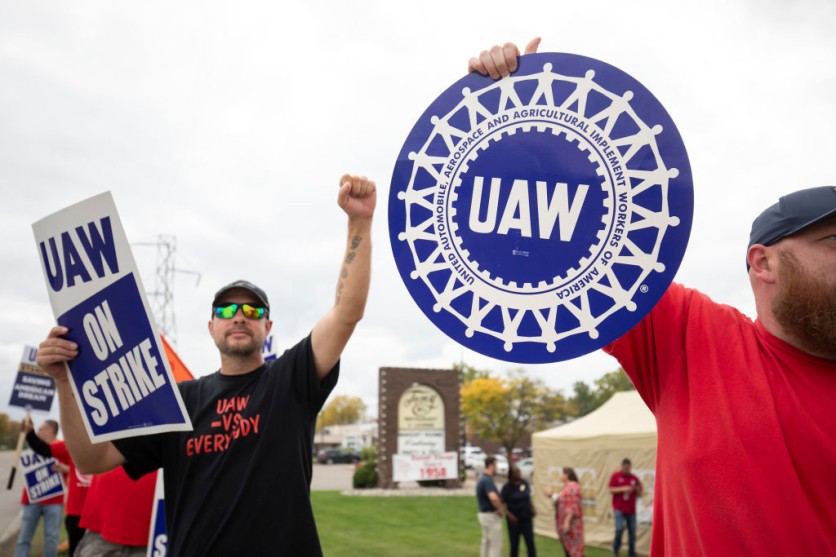UAW's unexpected decision to initiate a new strike at General Motors on Saturday, just when it seemed that negotiations were reaching a resolution, follows a series of surprising maneuvers by the union.

Expanding Strike to GM
The United Auto Workers (UAW) union has extended its strike to General Motors, becoming the final holdout among the Detroit automakers to face labor actions. Associated Press reported that this development comes after the UAW reached a preliminary contract agreement with Stellantis, the manufacturer of Jeep vehicles.
The expanded strike was initiated on Saturday evening at the Spring Hill, Tennessee plant, which is GM's largest facility in North America. Approximately 4,000 employees from this plant have joined the ongoing strike that already involves around 14,000 workers at GM factories located in Texas, Michigan, and Missouri.
UAW's decision to escalate the strike, following 44 days of targeted labor actions, has not been immediately clarified. This intensification puts significant pressure on GM, as the Spring Hill plant produces engines for vehicles assembled in nine different plants, extending to Mexico.
Additionally, the Arlington, Texas plant, which is already on strike and receives engines from Spring Hill, manufactures full-size SUVs such as the Tahoe and Suburban. Notably, Spring Hill assembles a range of vehicles, including the electric Cadillac Lyriq, GMC Acadia, and Cadillac crossover SUVs.
Aiming to Conclude with Negotiations
The labor strike at Spring Hill holds significant implications for GM's production operations, with potential pressure on the company to quickly resolve the situation or risk disruptions across a significant portion of its production.
Wall Street Journal reported that the union's strategic aim is to conclude negotiations with all three automakers, ensuring that workers at Ford and Stellantis do not reject their tentative agreements while awaiting the outcome of the GM negotiations.
The agreement with Stellantis closely mirrors the terms reached with Ford and is expected to play a vital role in preserving jobs at various manufacturing plants, as communicated by the UAW. Over the weekend, the presidents of local Ford union chapters in Detroit unanimously gave their endorsement to the tentative contract following a comprehensive explanation provided by UAW President Shawn Fain.
In a later live presentation to the full membership, Fain, accompanied by Chuck Browning, the UAW vice president, emphasized the transformative significance of the agreement for the union's influence, asserting that it counters an economic landscape that had been favoring the billionaire class.
Browning also noted the substantial impact on UAW members, highlighting that Ford workers will experience more considerable wage increases in the next 4 1/2 years compared to the cumulative increases over the preceding two decades.
As per ABC News reported, Fain emphasized the historical significance of the agreement, characterizing it as a pivotal moment in the ongoing societal struggle that has unfolded in the United States over the past four decades.
Both the Ford and Stellantis agreements, set to extend until April 30, 2028, feature a substantial 25% general wage increase for top assembly plant workers, with an immediate 11% raise upon the contract's ratification.
Related Article : UAW, Ford Near Resolution to Month-Long Strike, Reaching Agreement with Autoworkers


![Apple Watch Series 10 [GPS 42mm]](https://d.techtimes.com/en/full/453899/apple-watch-series-10-gps-42mm.jpg?w=184&h=103&f=9fb3c2ea2db928c663d1d2eadbcb3e52)


